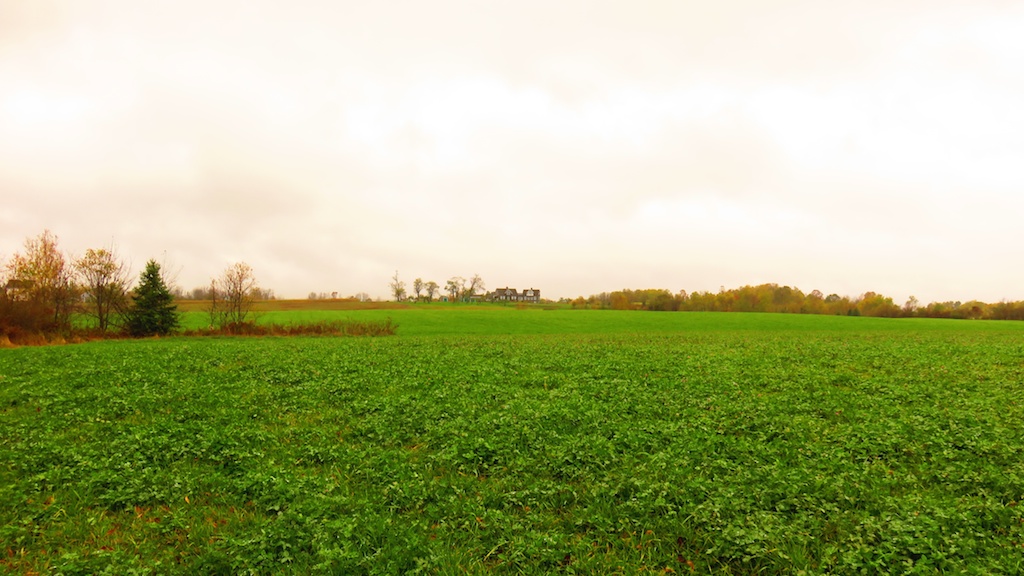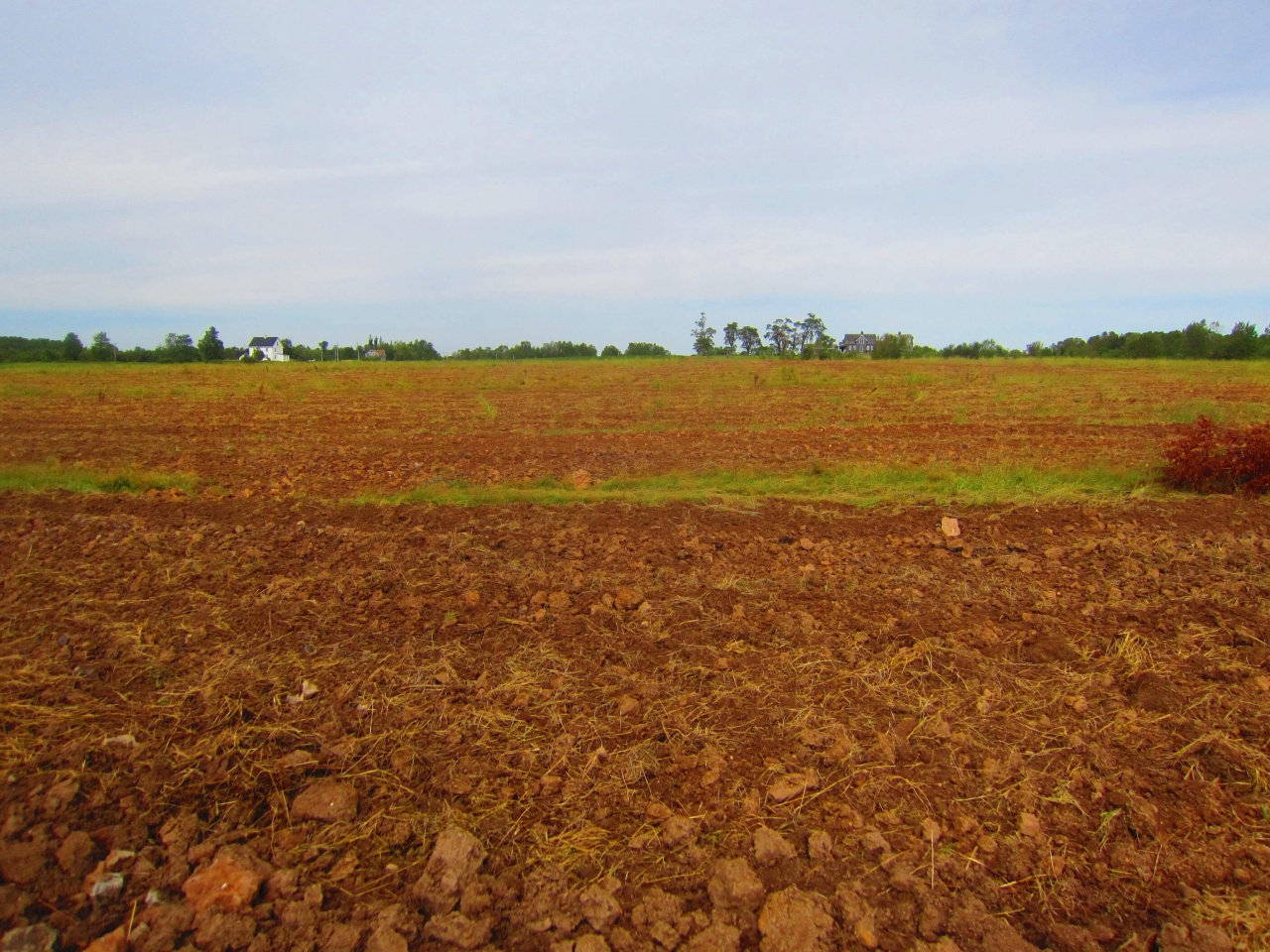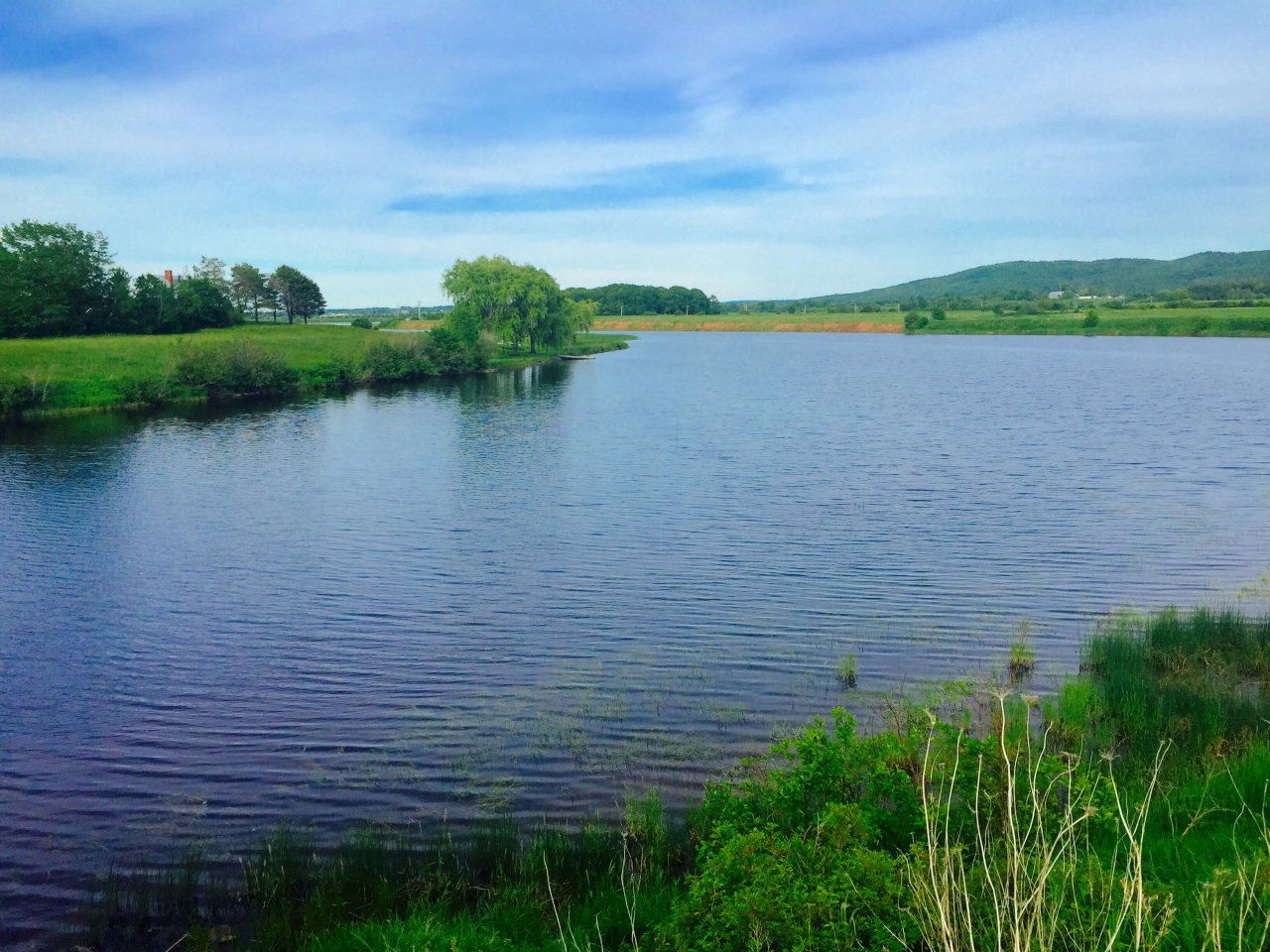
Choosing The Land
Don and Sharon started looking for suitable vineyard land in 2013. A critical factor in deciding on a location was weather. A study of weather at 14 sites in Nova Scotia from 1971-2000 showed that Martock (2 miles from Johnston Vineyards) had an average temperature of 7.4 C (45.3 F) and 1061 growing degree days (GDD), both the highest measured of any site in Nova Scotia . During the same period Niagara, Ontario had an average temperature of 9 C and GDD of 1471 allowing wineries in Ontario to successfully grow vinifera grapes on a consistent basis. The ocean climate on the Second Peninsula, Lunenburg County where Don and Sharon currently have a home is not suitable for grape growing, so they purchased 45 acres in Upper Falmouth at the eastern end of the Annapolis Valley, next to St. Famille Winery, one of the oldest family-run wineries in the province.
The land is on a gentle slope (3.5 degrees) facing southeast. Vineyards in cool climates should be on the upper reaches of a gently sloping, south facing hillside. This allows for maximum sun exposure, something that is in short supply in Nova Scotia, even in the Annapolis Valley. Planting on the upper portion of the hill minimizes the risk of frost in the spring which tends to settle at the bottom of the slope. Although there is a tendency in Nova Scotia to orient the vine rows in a north-south direction to maximize sun exposure, Johnston Vineyards will orient its vines in the direction of the hill (southeast). This should make management of the vineyard easier without significantly reducing the ripening of the grapes.
The Avon River is a tidal river that flows past Hantsport, once a famous port of call for sailing ships in the 1800s, into the Minas Basin and on to the Bay of Fundy. Don lived on Avon Street, on the outskirts of Hantsport, and spent a lot of time playing on the river. Its amazing tides and ocean-going ships carrying gypsum to the United States fascinated him. There were rowboats and wharves to build in the summer and icebergs to climb in the winter. Swimming in muddy water when the tide was up and fishing Tommy cod on the incoming tide kept him busy.





